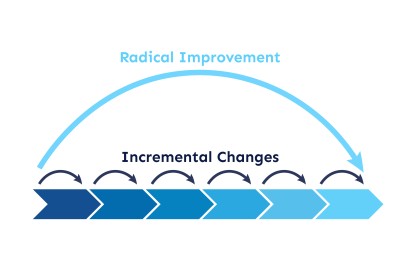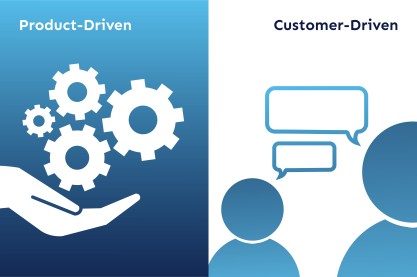Total Quality Manage...
18239 | 6 Apr 2023

In today's rapidly changing business landscape, effective asset management has become a top priority for organizations. It's considered a crucial element for successful operations, involving strategic planning, acquisition, use, maintenance, and disposal of assets to maximize their value and minimize risks. This article provides a clear and concise overview of asset management, emphasizing its importance, key principles, best practices, and its promising future for organizations worldwide.
At its core, asset management revolves around the concept of assets—valuable resources that organizations possess or control. These assets manifest in various forms, including financial investments, physical properties, and intangible intellectual property. The fundamental essence of asset management lies in recognizing that assets play a pivotal role in supporting an organization's operations, driving investments, enhancing competitiveness, and ensuring long-term sustainability. To truly grasp asset management, it's essential to acknowledge the lifecycles these assets undergo, encompassing acquisition, utilization, maintenance, depreciation, and eventual disposal. The ultimate aim is to align these assets harmoniously with the organization's strategic objectives.
To embark on our journey into asset management, we must first define what assets are. Assets, in the context of organizations, encompass everything of value that a business owns or controls. These assets can take various forms:
Assets are the lifeblood of any organization. They serve as the foundation upon which a business builds its operations and strives to achieve its goals. Understanding the role of assets is crucial:
Asset management transcends mere financial stewardship; it stands as a cornerstone of organizational success. Its multifaceted impact encompasses enhanced profitability, proactive risk mitigation, unwavering regulatory compliance, fervent commitment to sustainability, optimized resource allocation, cultivation of competitive advantage, and the nurturing of holistic organizational well-being. In essence, it ensures that an organization thrives in a dynamic and ever-changing business landscape.
To navigate the complex landscape of asset management effectively, establishing a solid foundation based on core principles is paramount. These principles guide successful asset management practices across industries and organizations worldwide:
Assets are the lifeblood of any company, constantly moving within the workspace—they can increase, come and go. Tracking assets in real-time is a crucial aspect of the asset management process. AMS allows for the monitoring of potential risks such as asset depreciation and amortization, among others. It's also important to monitor the asset's lifespan and operational efficiency to prevent any damages, production downtime, or other issues that could pose a greater cost to the organization than simply writing off or purchasing a new asset.
The larger the organization, the more challenging it becomes to track all assets and monitor all changes. AMS provides information about when an asset is lost or stolen, when it needs maintenance, and even allows for the preparation of precise and detailed audit reports.
With the implementation of Asset Management Software (AMS), an organization gains insight into its "assets" generated throughout its entire operations (financial resources, investments, know-how, etc.). Implementation enables the planning and maintenance of these assets and aligns them with the strategic objectives of the organization.
With a properly selected and implemented AMS, an organization can predict and plan its budgetary needs, as well as organize sales, purchases, and investments in new assets.
According to ISO 55001 standards, AM is defined as a systematic and coordinated set of activities through which an organization optimally and sustainably manages its assets and its system for managing them, their efficiency and performance, risks, and costs throughout their lifecycle with the purpose of the organization's strategic plan.
ISO 55000 is a family of standards for asset management that includes framework, leadership, planning, support, operation, evaluation (effectiveness and performance), and improvement.
Benefits of AM:
Understanding the principles of asset management is pivotal, but it's the best practices that transform theory into actionable strategies:
The future of asset management is characterized by innovation, automation, sustainability, and data-driven decision-making. Organizations embracing emerging trends and technologies will be better positioned to optimize their asset portfolios, reduce risks, and thrive in a competitive and dynamic business environment. These trends include:
Embracing these trends empowers organizations to proactively manage assets, reduce risks, enhance operational efficiency, and align asset management with strategic objectives. As the landscape of asset management evolves, organizations that adapt and innovate will be poised for success in a dynamic business world.
Asset management is pivotal for organizational success. It enhances profitability, reduces risks, ensures compliance, promotes sustainability, and aligns assets with strategic goals. By following core principles, implementing best practices, and embracing emerging trends, organizations can optimize their asset management efforts and shape a brighter future for their operations and stakeholders.
As you embark on your asset management journey, remember that assets, when managed strategically and responsibly, have the power to drive innovation, create value, and shape a brighter future for all.
What are your thoughts on the subject above? Feel free to post a comment or start a discussion.
TAGS: Asset Allocation, Asset Valuation, Asset Tracking System, Asset Maintenance Strategies, Asset Lifecycle Management, Asset Disposition, Financial Asset Management, Physical Asset Management, Intellectual Property Management, Asset Monitoring, Asset Performance, Investment Portfolio, Asset Utilization, Risk Management, Strategic Asset Planning, Asset Strategy, Asset Tracking Software, Asset Management Tools, Asset Data Analytics, Asset Efficiency, Sustainable Asset Strategies, Asset Tracking Solutions, Asset Optimization Techniques, Asset Risk Mitigation, Asset ROI, Asset Management Trends, Asset Management Consulting, Asset Management Services, Asset Management Platforms, Asset Management Framework, Asset Management Process, Asset Management Technology, Asset Management Reporting, Asset Management Compliance, Asset Management Training, Asset Management Implementation, Asset Management Challenges, Asset Management Solutions, Asset Management Benefits, Asset Management Innovation, Asset Management Systems, Asset Management Strategies, Asset Management Goals


Leave A Comment